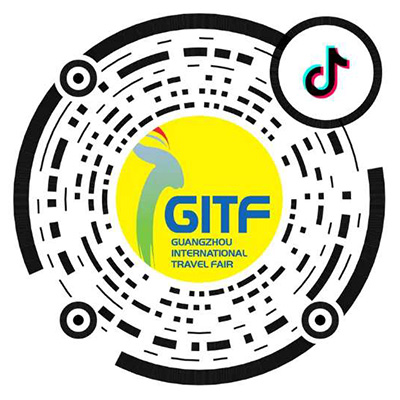
Forum Review丨Exploring New Pathways! Where is the Future of Destination Tourism and Study Tours?
2024-07-04
As global tourism is on the "fast track" of development, is it merely a competition on the crowded "existing" track, or is there any room to explore new development paths and uncover fresh "incremental" tracks? For tourist destinations, the answer is clear. In the face of rapidly evolving visitor demands, the urgency to explore new paths becomes increasingly apparent.
On the afternoon of May 17th, a deep dive into destination tourism and study tours took place at Guangzhou International Travel Fair 2024. The eager expressions in the audience reflected a thirst for new ways to travel, new experiences, and new pathways. The forum's speakers focused keenly on "study tours," suggesting that the future of destination tourism might just lie here.
Part One
What Unique Features Do These Popular Destinations Hold?
As the forum's host, Yu Yang, the Chief Representative of the Netherlands Board of Tourism and Conventions in China, kicked off the highly anticipated event. Following this, representatives from Poland, the Netherlands, and Luoyang, China, took the stage to share their respective destinations' tourism development stories. Their narratives provided insights into why some destinations continue to thrive amidst fierce competition.
Following Chopin's Footsteps – A Music Study Tour in Poland
Presenter
Daiqi Xing, Market Specialist of Polish National Tourist Office, Beijing
One of the most iconic Polish celebrities is the well-known piano player and composer - Chopin. Every year, countless visitors come to Poland, inspired by their love for Chopin. What sets a Chopin musical journey apart from other music tours is that it not only acquaints children and parents with Chopin's music and aesthetics but also inspires a broader understanding of music and life. It's also a journey of patriotism.
As a study tour, master classes about Poland and Chopin-related courses are of course the core. The most famous and suitable summer student travel experience is the summer music masterclass of Chopin University of Music. Chopin University of Music is also the top music education institution in Poland. Every July and August, the university will organize excellent tutors for training.
Warsaw is crucial, where Chopin absorbed the vitality of life, learned compositional methods, familiarized himself with them, and made his debut in writing and playing the piano, so visiting Chopin's hometown is one of the important parts of our itinerary. Chopin could be considered a travel enthusiast of his time. Over 200 years ago, when railways did not yet exist, he traveled by carriage to nearly all of Poland's famous tourist cities. He visited the amber capital of Gdańsk in the north, Poznań in the south, Toruń, and Wrocław near the German border, close to Saxony. Following Chopin's footsteps, we can design a fascinating travel route that traces his journey across Poland. Poland's advantage lies in being one of Europe's most cost-effective countries, particularly in terms of hotel and transport resources, making study tours highly attractive and affordable.
Bicycles: A Lifelong Friend to the Dutch
Presenter
Yu Yang, Chief Representative of the Netherlands Board of Tourism and Conventions in China
Our forum seeks to combine destination tourism with study tours, and I found a perfect connection in Dutch is bicycle. In the Netherlands, bicycles are ubiquitous and an integral part of daily life, not just as transportation but as a lifelong companion. Bicycles are essential for daily commutes, leisure, and exercise. The Dutch have even turned their bicycles into a form of artistic expression. Artists, engineers, and high-tech companies have recreated Van Gogh's 'Starry Night' on a bike path, making it a unique tourist attraction.
In the Netherlands, electric-assist bicycles have become very popular, especially among young people. Riding these newly designed bikes, they explore the streets and alleys, visit weekend markets, and tour various attractions. While cycling, you might stop by a quaint café, browse a flower market, buy a bouquet, and then relax on a riverside beach in Utrecht. These experiences are uniquely accessible by bicycle. Riding around, you can eat, explore, and fully immerse yourself in Dutch life, while also discovering their sustainable and environmentally friendly practices. It’s an experience I highly recommend, especially for families with children.
The Earliest China in Luoyang: A Journey to the Roots of Chinese Civilization
Presenter
Sumin Cheng, Exchange and Cooperation Department, Luoyang Municipal Bureau of Culture, Radio, Television, and Tourism
Luoyang is an ancient capital of thirteen dynasties. When discussing study tours in Luoyang, we introduce the concept of "The Earliest China is in Luoyang." The term "China" first appeared over 3,000 years ago on a bronze vessel called "He Zun." It bore the inscription "Zhai Zi Zhong Guo," marking the earliest appearance of the word "China". With over 5,000 years of civilization, 4,000 years of city history, and 1,300 years as a capital, Luoyang is one of the earliest cities founded in our country. It is the ancient capital with the earliest founding, the largest number of dynasties and the longest history of our country, and it is also the place where China begins, so it is known as the 'earliest China'.
Additionally, Luoyang is famous for its peonies, first cultivated during the Sui Dynasty. With a history of over 1,500 years of peony cultivation, Luoyang boasts nine major color series, ten flower shapes, and more than 1,400 varieties, covering an area of 180,000 mu. Every April, the blooming peonies fill the city with vibrant colors and fragrance. The Chinese saying "花开花落二十之日,一城之人皆若狂" vividly depicts the city's love and admiration for peonies. Besides its rich history and beautiful peonies, Luoyang is also a city of natural beauty. It is home to two world geological parks, Funiu Mountain and Daimei Mountain. The Yellow River, Luo River, and Yi River converge here, forming the Heluo Culture of the Chinese nation. There are also other attractions such as Laojun Mountain, Baiyun Mountain, Jiguandong, and the "Northern Thousand Islands Lake" Xiaolangdi of the Yellow River, and the geological wonder Longtan Grand Canyon. In recent years, Luoyang has been actively implementing a new strategy of cultural tourism innovation, promoting new tourism and cultural experiences. Our slogan is "Disruptive Creativity, Immersive Experience, Youthful Consumption, Mobile Communication," aiming to create an immersive cultural tourism destination.
As the autumn wind awaits, come to Luoyang. I am here today to extend a sincere invitation for everyone to visit the earliest China in Luoyang, explore the Heluo landscape, stroll through the ancient alleys, read about the prosperous Sui and Tang Dynasties, savor the Luoyang water banquets, drink Du Kang wine, and feel the vibrant pulse of this millennia-old capital as you discover the roots and soul of Chinese civilization.
Part 2
Keynote Speeches
Focusing on Inbound and Outbound Travel Product Design
After each destination shared their unique highlights, Mr. Zhanfeng Zhou, Deputy General Manager of International Tourism Department at China Youth Travel Service (CYTS), and Ms. Zhang Huan, founder of Voglia d’Italia Tour took the stage. They presented their perspectives on inbound tourism in China and the design of study tours products in Italy. In the current flourishing landscape of inbound and outbound tourism, only by enhancing product quality can one secure a place in this fiercely competitive market.
Opportunities and Challenges in Chinese Inbound Tourism
Presenter
Zhanfeng Zhou, Deputy General Manager of the International Tourism Department at China Youth Travel Service (CYTS)
My theme is 'The Rebirth of Inbound Tourism.' China's tourism industry began with inbound tourism, but it has undergone significant changes over the decades. Since last year, favorable policies for inbound tourism have emerged, making entry payments more convenient. For instance, 191 countries offer visa-free access to German passport holders, plus China, making it 192, presenting significant competition.
Even after implementing visa-free policies, inbound tourism in China still faces numerous challenges. The first challenge is enhancing the comfort, convenience, and service with a smile that China offers as a tourist destination. There is also a need to improve the detailed planning and integration of tourism resources. The second challenge is the level of internationalization, such as whether people can speak English and the clarity of subway signs. To become a truly international metropolis, we need to make progress in language accessibility.
We are especially grateful to the Guangzhou International Travel Fair for providing a platform to discuss how to collaborate on inbound tourism. Only by working together can we achieve mutual success. Finally, we must aim for repeat visitors. The number of repeat visitors to China is currently too low, which is related to our marketing and investment efforts. Additionally, we need to increase our investment in inbound tourism and focus on cultivating the next generation of talent.
Enhancing Aesthetic Appreciation and Embracing a New Era: Italy Product Design Study Tour
Presenter
Huan Zhang, Founder of Voglia d’Italia Tour, Italy
This time, we have brought our new product, the 'Italy Product Design Study Tour' to Guangzhou International Travel Fair. The industry is currently very competitive, and I believe that to create value, we must break away from the competition. If we can create value, there is hope for any enterprise.
Voglia d’Italia Tour focuses solely on tourism in Italy. Our goal is to determine what value we can bring to the tourism industry, especially to tourists. After deep consideration, I identified 'design' as the key element of Italy. For example, as a travel agency, I should integrate Italy's most valuable aspects into a product that offers immeasurable value to Chinese tourists.
Therefore, we use design as the starting point, integrating Italy's globally leading design elements into a product. Participants of this study tour will gain intangible value. This product is mainly aimed at business leaders, brand managers, and product design managers. When these individuals visit Italy and gain inspiration, their store image, product packaging, and overall competitiveness can improve significantly. Chinese entrepreneurs going to Italy for inspiration is an embodiment of 'going out, bringing back,' and 'reading ten thousand books, traveling ten thousand miles,' engaging with the world. In summary, an Italian design immersion journey offers invaluable insights, which I believe is what tourism professionals should focus on today.
Part 3
Roundtable Discussion
Exploring New Models and Embracing New Challenges
At the end of the forum, a roundtable discussion continued the lively atmosphere. Participants included Mr. Shengli Xu, China Chief Representative of the Saxony Tourism Board in Germany, Ms. Daiqi Xing, Market Director of the Poland Tourism Board Beijing Office, Ms. Youmei Wang, Deputy General Manager of Luoyang Ancient Capital Study Travel Development Co., Ltd., and Mr. Hanfei Nie, former Senior Editor of Southern Weekly and current representative of Guangzhou Shiguang Culture Media Co., Ltd. They discussed the deep integration of study tours with destination tourism, new models, new opportunities, and new challenges.
Shengli Xu briefly introduced Saxony, one of Germany's 16 federal states, which has a sister-state relationship with Hubei Province and is located in eastern Germany.
Daiqi Xing mentioned that Poland's 15 visa centers in China had fully reopened on May 6, making it very convenient to design and promote study tours and educational travel products in Poland, as well as connecting with Germany, the Czech Republic, and other countries.
The conversation then shifted to market changes, with guests discussing high-end study tours. Hanfei Nie defined the target customers for high-end study tours as the "two high" groups: high net worth and high education. He emphasized that high quality equates to high returns.
Youmei Wang noted that many travel products are undergoing a reshuffle, transitioning from traditional modes to high-end developments. Nowadays, there is a stronger desire for unique products. Daiqi Xing agreed, pointing out that high-end tourists have a heightened demand for themed tours. For high-end tourists, if a product lacks a theme, why join a group tour?
Shengli Xu highlighted that market recovery data placed high demands and challenges on travel agency partners. The market is changing, and so are the customers. Capturing these changes and refining products to be more meticulous is essential to attract customers. "How can a destination far away in Europe, possibly unknown to Chinese people, gain more recognition, appeal, and attract more visitors? This is indeed a significant challenge." Shengli Xu also pointed out that many small and niche travel agencies are often overlooked. These agencies might not be traditional travel agencies but rather cultural companies, PR firms, or well-organized clubs. These entities form the core of current travel to Europe, Germany, and Saxony, attracting photography enthusiasts and those interested in culture and history. How to get in touch with them in this way and establish initial contact? Coming to GITF is a good opportunity to do so.
Address: Room 1510, West Tower, Poly Trade Center, No.1000 Xingang East Road, Haizhu District, Guangzhou, China










